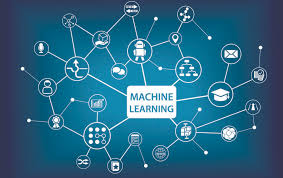Source: devops.com
Today’s customers overwhelmingly favor the simplicity of subscription models, in which they pay a flat monthly fee for access to a product in the form of a service. For example, consumers no longer buy or rent DVDs; they subscribe to Netflix. And more prefer to use the services of Uber or Lyft over traditional car ownership. As these digital-age consumers enter the industrial workforce in large numbers, they are causing business models to be redefined, leading to an increasing trend toward subscription-based services in manufacturing industries.
This shift toward a subscription-based business model in the manufacturing industry is being referred to as servitization, wherein manufacturers no longer strictly sell new products but instead sell access to and the outcome those products deliver. This new way of delivering services is forcing manufacturers to shift to subscription-based pricing models, where product-as-a-service is the norm. Manufacturers of complex industrial equipment, because they operate in a B2B environment, can attribute this shift to another major cause: Their customers are also dealing with complex operating paradigms, forcing them to improve productivity and capital utilization. In these scenarios, customers are looking to simplify their businesses and increasingly favor suppliers that can help minimize their risks in operating a profitable business.
The full realization of servitization, which could take up to 15 years, especially impacts manufacturers’ after-sales service organizations (the service delivered after the initial sale of a product). In today’s current reactive, break-fix service model, the responsibility to maintain and ensure equipment availability falls on the customer. In a servitization model, however, manufacturers own the responsibility of maintenance and repairs and need to focus on maximizing product uptime, since revenue can only be earned when their products are available to generate output in the field.
Machine Learning and Predictive Analytics in Manufacturing
The use cases of machine learning and predictive analytics are as varied as the industries within manufacturing. However, there are a few common use cases that apply to most manufacturing verticals, typically grouped under terms such as smart manufacturing, industry 4.0 or industrial internet of things (IIoT).
- Predictive Maintenance: Predictive maintenance is the most well-understood and varied use case in most manufacturing industries. Here, data from process monitoring sensors such as temperatures, pressures, flows, vibrations and more are captured in real-time and used in pattern recognition software to detect the earliest symptoms of wear and tear predictive of eventual functional failures. Early detection and prediction can help prevent failures or at least plan for eventual corrective actions leading to minimized downtime. Downtime—especially unplanned downtime—can be a very expensive event, possibly leading to millions of dollars in losses. Some analysts estimate unplanned downtime in certain industries is worth $20 billion.
- Process Optimization: Process optimization, in which existing processes are updated and optimized based on historical data, is a critical use case, especially in industries such as power generation, oil and gas refining, petrochemicals and chemicals. In this instance, sensor data feed machine learning algorithms for yield and quality optimization of output components for different combinations and quality of input raw material feedstocks. This also helps with energy efficiency, thus improving sustainability and profitability for these process manufacturers. In the global airline fleet, for example, a 1% fuel savings would save $30 billion over the next 15 years.
- Supply Chain and Inventory Management: High levels of raw material, work-in-process and finished goods (e.g., replacement service parts) inventory are one of the highest contributors to inefficient capital utilization for discrete manufacturing industries. Using machine learning to improve raw material and demand forecasts while meeting dynamically changing production goals helps improve capital utilization and supports lean and just-in-time manufacturing production goals.
In today’s customer-driven world, manufacturers no longer can rely on selling expensive spare parts and services, since these become costs of supporting a single-price subscription. This shift will require manufacturers to completely re-think how they operate—new organization structures and skilled resources, new incentive models, new KPIs to measure success and new processes replacing ones developed over decades and centuries. They will have to become data-driven organizations, investing in technologies to connect and track products, collect data and efficiently analyze these massive amounts of operational and service data, using technologies such as IoT, machine learning and predictive analytics. This will strain manufacturers’ existing organizations and IT infrastructures, necessitating investment in highly scalable cloud-based solutions to lay the foundation for a successful future.
Manufacturers that embrace these changes will be the winners, while others will struggle to stay relevant. In fact, the ones who can successfully adapt to these paradigm shifts will be able to gain a significant competitive advantage over their competition.
